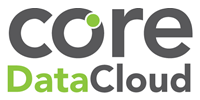Vendor branded backup appliances – why?
by Brian Jones – Pre Sales.
Before I get started let me just limit what I will discuss in this blog, there are many areas of interest in this market on which I could comment; however today I want to look at the recent trend for a host of backup software vendors to launch their own branded backup appliances. This has been most noticeable recently among vendors who target the small and medium enterprise market – large enterprises having had purpose built backup infrastructure for decades now.
What I would like to look at are the motivations of the organisations concerned in launching these products, and whether they represent best practice and value for the end user.
A quick google revealed that (no doubt among others) Arcserve, Datto, Unitrends, Asigra, Commvault and Storagecraft all now have appliances available. Notable names missing from this list are Veeam and Zerto for the obvious reason that they are virtualised environment specific products that align themselves with a virtual deployment model.
We can readily see the advantages to these vendors in supplying their own hardware, preconfigured with their software offerings. I would not like to suggest that the order I discuss these below indicates the priorities of those organisations!
Profit – margin on the boxes themselves
Client tie in – a dedicated vendor specific appliance makes it less likely a client will switch to an alternate backup technology
Ease of administration – most appliances come with an ‘all you can consume’ licence, considerably reducing administration of some unwieldy licensing schemes
Ease of support – by standardising the hardware platform supporting the solution becomes easier
However from the point of view of the end user, what are the pro’s and con’s of the vendor appliance?
Pro’s:
Improved support likely due to familiarity with the hardware platform
Optimal hardware configuration – clearly the vendor are in the best position to specify the appliance to maximise performance of the software. That said this information should be freely available anyway.
Ease of implementation: With pre-installed software and usually a wizard to guide the end user through their initial setup of the solution, vendor appliances are easier to get up and running – assuming the end user is doing this themselves.
Cons:
Sizing – The vendors usually offer a range of appliances for different sizes of organisation, but it questionable whether an end user would obtain the same ROI as they could from a box specified for them specifically.
Scalability – Most of these appliances are not expandable, so should the end user fill the device they have no option but to delete data or buy another appliance.
Value for money – There is a food chain to support in the provision of these devices to market – vendors do not want to support a worldwide warranty/spare parts network so most source the hardware from the same factory in China, then brand it as their own. So do they represent good value for money as a piece of tin? Probably not; the end user is paying for the convenience of the product.
Conclusions: If an end user does not have the experience to build and deploy an appliance themselves, and does not have a partner organisation with this specialist knowledge and experience, then vendor appliances are a good choice for confidently implementing a backup and DR solution.
If however the end user has a specialist partner who can deploy and support a box specified individually for them, this is the preferable solution.


